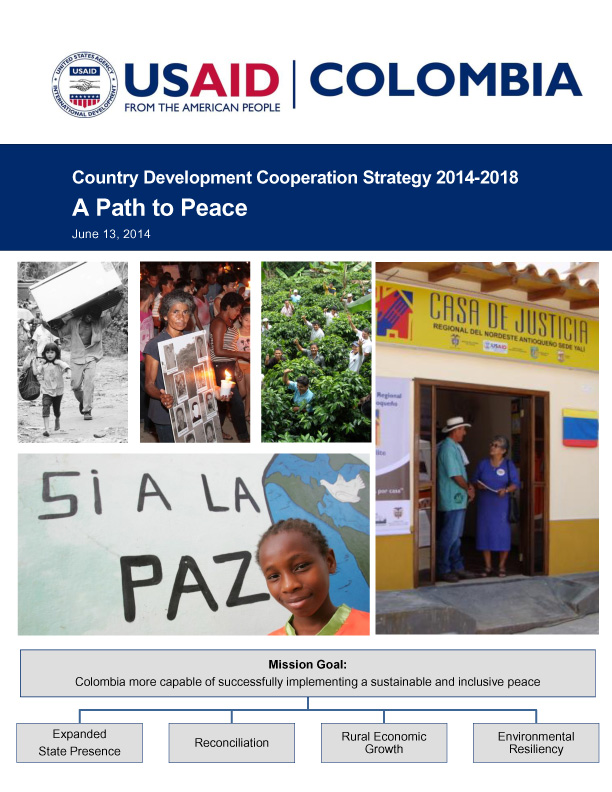USAID’s 2014-2018 Country Development Cooperation Strategy (CDCS) describes the USG’s development assistance package in support of Colombian efforts to continue the transition out of conflict.
After a half-century of intractable violence, Colombia may be nearing an end to its fifty-year internal armed conflict. Ongoing negotiations between the Government of Colombia (GOC) and the Revolutionary Armed Forces of Colombia (FARC – the Western Hemisphere’s oldest insurgency) continue to advance, albeit slowly, with an array of complex issues still to be resolved. The United States Government (USG) has clearly stated its support for these negotiations and is planning to assist in the implementation of any agreement that may result from the talks.
But regardless of whether an agreement is reached, growing evidence suggests that Colombia is already on a path out of conflict toward greater stability and development. Colombia’s own extraordinary efforts, coupled with a greatly enhanced USG security and economic development support beginning in 2001, show a clear, positive and measurable trend of diminishing conflict.
USAID’s 2014-2018 Country Development Cooperation Strategy (CDCS) describes the USG’s development assistance package in support of Colombian efforts to continue the transition out of conflict, including support for the implementation of an agreement to end the conflict should one be reached. While this CDCS is based on the assumption that an agreement will be reached, the program presented herein is scalable to peace agreement and non-peace agreement scenarios.
Colombia is not a typical aid recipient and USAID’s commitment stems from the instability and strife associated with the country’s 50-year civil conflict. Colombia’s status as a steadily growing middle-income country masks severe inequities. In reality, there are two Colombias: a dynamic and sophisticated Colombia in a half-dozen urban centers such as Bogota and Medellin that coexists with a poor, institutionally weak, conflict-ridden rural Colombia. While it is true that Colombia’s economy has grown at an impressive annual average of 4.4% from 2007 to 2012, and that foreign direct investment has grown almost tenfold during the same period, the benefits of sustained economic growth have been unequally distributed. Large parts of the country still remain beyond the authority of the state and have not benefitted from the broader success of the Colombian economy. As a consequence of protracted historical neglect, these ungoverned, largely rural areas suffer from unacceptably high poverty rates, low basic human development indicators, and lack of sustainable, licit economic opportunities. Because the grievances surrounding these issues drive conflict, Colombia must address them in order to transition to a durable peace.









Comment
Make a general inquiry or suggest an improvement.